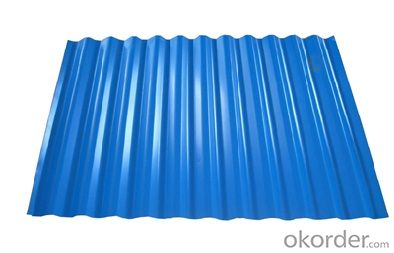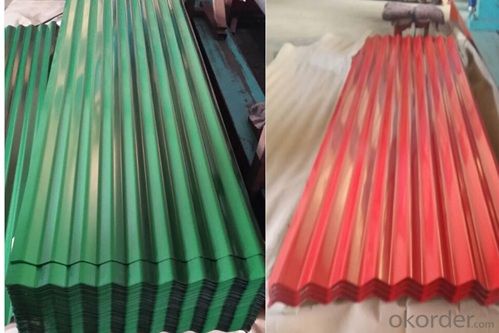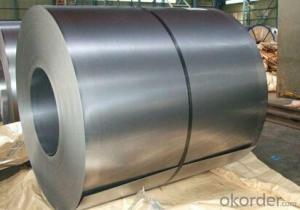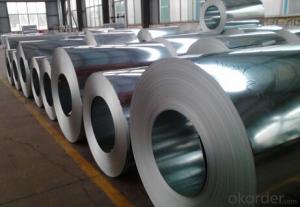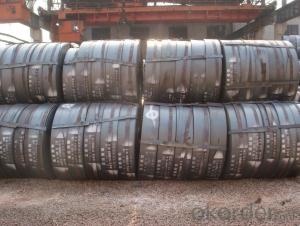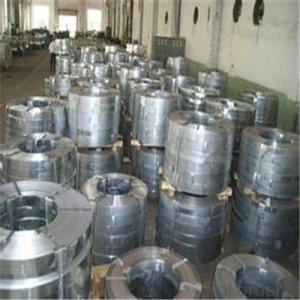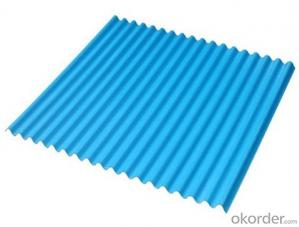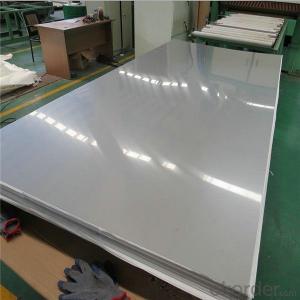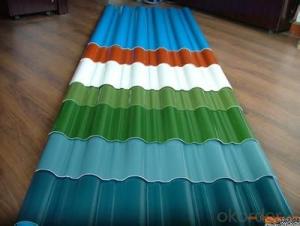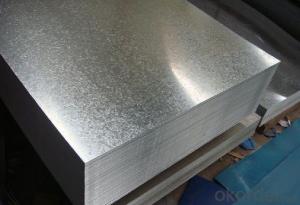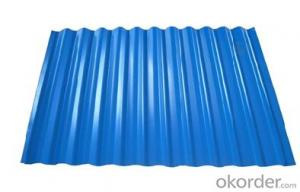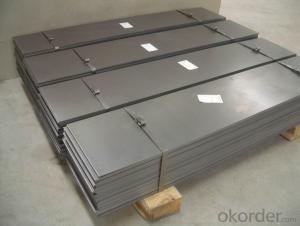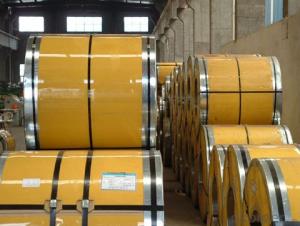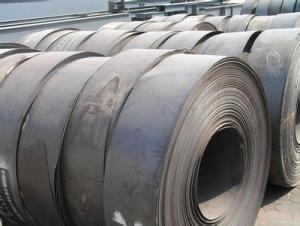Colorful Corrugated GI Galvanized Steel Sheet
- Loading Port:
- Shanghai
- Payment Terms:
- TT OR LC
- Min Order Qty:
- 25 m.t.
- Supply Capability:
- 20000 m.t./month
OKorder Service Pledge
OKorder Financial Service
You Might Also Like
Specification
Product Brief Introduction
Colorful Corrugated GI Galvanized Steel Sheet
Galvanized Corrugated Steel Roofing Sheet is formed by cold roll machine, using galvanized steel sheet or aluminum steel as the base material .Galvanized corrugated steel roofing sheet is featured with easy installation ,high strength ,more economic .( low cost )
Product Features
.Outlook Beautiful and novel, rich colors, flexible combination, can be used in different buildingto express special original architectural styles in life.
.Surface have been treated as galvanized and color coated.so it can anti-rain,anti- fire,anti-quake,So it has a long term life as 20-30 year and color just not fade.
. Light weight: easy to transport the material,short the time to finish the building,reduce worker's hard work,save much time and energy for human beings.
.Smooth surface treatment,the dust will be easy taken off by the rain.
. Environmental material,can be used many times,will do no hard to the our environment.
Product Specification
.Thickness:0.13mm to 0.8mm
.Length: 1m to 11.8m.
. Color: navy blue,white grey and any RAL colors.
. Certification: ISO9001:2000.
.Material : cold rolled galvanized steel coil.
. Standard: JIS,DX51D,SGCC,Q235. A653
. advantage: waterproof,light weight, high strength,best price.
. HS code: 7210700000
Packing Information (For 27.5 Tons heavy 20’Fcl)
. water proof paper packing in side
. plastic film Packing in middle
. steel sheet Packing out side
.several steel strip packing to fix the packing
Production Line & Package
FAQ
1. how many wave for per pcs
—— some wave is 8 ,same wave is 9 ,save wave is 11 ,it is up to your request
2. What is the MOQ for this products ?
—— Normally the MOQ is 25mt per size and per color .

- Q: Can steel strips be used in the medical industry?
- Yes, steel strips can be used in the medical industry. Steel strips are versatile and can be used for various applications in the medical field. They are commonly used for manufacturing surgical instruments, medical implants, and medical equipment. Due to their strength, durability, and corrosion resistance, steel strips are ideal for applications where high precision and reliability are required. They can be easily shaped and formed into different medical devices, ensuring that they meet the specific needs of patients and healthcare professionals. Steel strips can also be surface treated to enhance their biocompatibility, making them suitable for implantable medical devices. The surface treatment can provide additional benefits such as reducing the risk of infections and promoting better integration with the patient's body. Moreover, steel strips offer excellent mechanical properties, allowing for precise machining and fabrication. They can be easily sterilized and cleaned, making them suitable for use in sterile environments. It is important to note that stainless steel is commonly used in the medical industry due to its resistance to corrosion and ability to withstand harsh sterilization processes. However, other types of steel can also be used depending on the specific requirements of the medical application. In conclusion, steel strips can be utilized in the medical industry for a wide range of applications. Their strength, durability, corrosion resistance, and ability to be surface treated make them a reliable choice for manufacturing surgical instruments, medical implants, and other medical equipment.
- Q: How are steel strips cleaned and degreased?
- Steel strips are typically cleaned and degreased through a multi-step process. Firstly, they are often subjected to a thorough mechanical cleaning to remove any loose dirt or debris. Then, the strips are dipped into a chemical bath containing a degreasing agent, such as alkaline cleaners or solvents, which help dissolve and remove any oil or grease present on the surface. Alternatively, they may be sprayed with high-pressure jets of water mixed with appropriate detergents. Finally, the strips are rinsed with water to remove any remaining cleaning agents, dried, and prepared for further processing or storage.
- Q: What are the different types of heat treatments for steel strips?
- There are several different types of heat treatments that can be applied to steel strips to enhance their properties and meet specific requirements. Some of the common heat treatments for steel strips include: 1. Annealing: This process involves heating the steel strips to a high temperature and then slowly cooling them, usually in a controlled atmosphere. Annealing helps to relieve internal stresses, improve machinability, and enhance the ductility and toughness of the steel. 2. Hardening: Hardening is a heat treatment technique that involves heating the steel strips to a high temperature and then rapidly cooling them, typically using quenching in oil or water. This process increases the hardness and strength of the steel, making it suitable for applications where wear resistance and durability are crucial. 3. Tempering: Tempering is often performed after the hardening process. It involves heating the hardened steel strips to a lower temperature and then slowly cooling them. This treatment helps to reduce the brittleness caused by the hardening process and improves the toughness and ductility of the steel. 4. Normalizing: Normalizing is a heat treatment method similar to annealing, but with a faster cooling rate. The steel strips are heated to a temperature slightly above the critical point and then cooled in still air. Normalizing helps to refine the grain structure, improve the overall mechanical properties, and enhance the machinability of the steel. 5. Stress relieving: This heat treatment is performed to relieve the internal stresses that can develop during manufacturing processes such as cutting, bending, or welding. The steel strips are heated to a specific temperature and then slowly cooled. Stress relieving helps to prevent distortion or cracking and improves dimensional stability. 6. Case hardening: Case hardening is a surface treatment method that aims to increase the hardness and wear resistance of the outer layer of the steel strips while maintaining a tough and ductile core. This is achieved by heating the steel strips in the presence of a carbon-rich atmosphere or by introducing carbon-rich compounds onto the surface and then quenching them. 7. Solution annealing: This treatment is primarily used for stainless steel strips. It involves heating the steel strips to a high temperature followed by rapid cooling to dissolve any carbides or other precipitates. Solution annealing helps to restore the corrosion resistance and mechanical properties of stainless steel. These are just a few examples of the various heat treatments available for steel strips. The choice of heat treatment depends on the specific requirements of the application and desired properties of the steel.
- Q: What are the main factors affecting the corrosion resistance of galvanized steel strips?
- The main factors affecting the corrosion resistance of galvanized steel strips include the thickness and quality of the zinc coating, the presence of impurities or defects in the coating, exposure to corrosive environments, and the overall maintenance and care of the steel strips.
- Q: Can steel strips be used for making medical equipment?
- Yes, steel strips can be used for making medical equipment. Steel is a commonly used material in the medical industry due to its strength, durability, and resistance to corrosion. It is often used in the manufacturing of surgical instruments, medical implants, and other medical equipment.
- Q: Can steel strips be used in the production of shipbuilding components?
- Yes, steel strips can be used in the production of shipbuilding components. Steel strips are commonly used in shipbuilding due to their high strength, durability, and resistance to corrosion. They can be shaped and cut into various components such as frames, plates, and beams, providing structural integrity and stability to the ship.
- Q: What are the different methods for embossing steel strips?
- There exists a variety of techniques for embossing steel strips, each possessing its own merits and applications. 1. Roll embossing remains the most prevalent method, involving the passage of the steel strip through a series of rolls with engraved patterns. The rolls exert pressure on the strip, resulting in the desired embossed design. Industries such as automotive, construction, and decorative applications widely employ roll embossing. 2. Heat embossing entails heating the steel strip before pressing it onto a patterned die. The heat softens the metal, enabling it to conform to the shape of the die. Heat embossing is particularly advantageous for intricate or elaborate designs that prove challenging to achieve through roll embossing. 3. Laser embossing represents a non-contact approach, utilizing a laser beam to create the embossed pattern on the steel strip. The laser selectively removes material from the surface, generating the desired design. Laser embossing offers remarkable precision and flexibility, rendering it suitable for complex and customized patterns. 4. Press embossing, also referred to as stamping, necessitates the use of a hydraulic or mechanical press to exert force on the steel strip against a die. The die possesses the desired engraved pattern, and the pressure from the press transfers the pattern onto the strip. Press embossing finds common usage in large-scale production and facilitates deep and uniform embossing. 5. Photochemical etching involves the application of a photoresist onto the steel strip, followed by exposure to ultraviolet light through a patterned mask. The exposed areas are chemically etched away, leaving behind the embossed design on the strip. Photochemical etching permits intricate patterns and is frequently employed for decorative or artistic purposes. Each method exhibits its own advantages and limitations, with the selection of a particular technique dependent on factors such as the desired design, production volume, precision requirements, and cost considerations.
- Q: How are steel strips tempered?
- Steel strips are tempered by heating them to a specific temperature and then rapidly cooling them. This process helps to reduce the brittleness of the steel and improves its toughness and flexibility.
- Q: How are steel strips used in the manufacturing of elevators?
- Steel strips are used in the manufacturing of elevators to provide structural support and stability, as well as to create the framework and panels of the elevator car.
- Q: What are the future prospects for the steel strip industry?
- The future prospects for the steel strip industry are promising. While the industry has faced challenges in recent years due to factors like overcapacity and trade disputes, there are several factors that indicate a positive outlook. Firstly, the growing construction and infrastructure development activities across the globe are expected to drive the demand for steel strips. These strips are widely used in various construction applications such as roofing, flooring, and cladding. As countries continue to invest in building and modernizing their infrastructure, the demand for steel strips is likely to increase. Additionally, the automotive industry, a major consumer of steel strips, is undergoing a transformation with the rise of electric vehicles and autonomous driving technologies. This shift will require the production of lightweight and high-strength materials, including steel strips, to meet the industry's changing needs. As a result, the steel strip industry is expected to benefit from the demand for advanced materials in the automotive sector. Furthermore, the increasing focus on sustainable and eco-friendly practices is likely to drive the adoption of steel strips. Steel is a recyclable material, and its use can contribute to reducing carbon emissions and achieving sustainability goals. This trend is expected to fuel the demand for steel strips as companies and governments emphasize environmental responsibility. Moreover, advancements in technology and manufacturing processes are expected to improve the efficiency and quality of steel strip production. This will lead to cost reductions and higher productivity, making steel strips more competitive in the market. However, it is important to acknowledge that the steel strip industry will still face challenges. Fluctuations in raw material prices, trade barriers, and competition from alternative materials like aluminum and composites can impact the industry's growth. Additionally, the industry needs to address sustainability concerns and invest in research and development to innovate and meet the evolving demands of various sectors. In conclusion, the future prospects for the steel strip industry are positive. With the growing demand from construction and automotive sectors, increasing focus on sustainability, and advancements in technology, the industry is well-positioned for growth. However, it will need to adapt to changing market dynamics and invest in innovation to stay competitive in the global marketplace.
Send your message to us
Colorful Corrugated GI Galvanized Steel Sheet
- Loading Port:
- Shanghai
- Payment Terms:
- TT OR LC
- Min Order Qty:
- 25 m.t.
- Supply Capability:
- 20000 m.t./month
OKorder Service Pledge
OKorder Financial Service
Similar products
Hot products
Hot Searches
Related keywords



